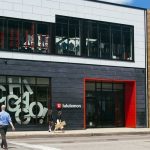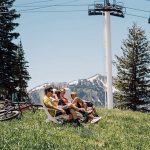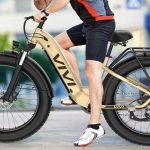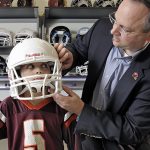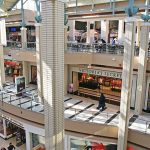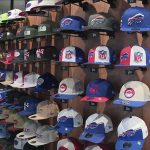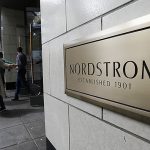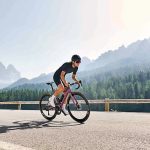REI's newly-opened Boulder prototype was designed as a testament to the potential of green building, but it also left something behind: the rock climbing wall. In its place is an elevated community center a first for REI. The 2,000-square foot area serves as a focal point for REI's volunteer and outdoor education programs. It also serves as a gathering place for the local Boulder outdoor community and includes an event space for 80 people available for nonprofits and outdoor clubs. The community center is designed to underscore REI's commitment to connecting its customers to resources for recreational opportunities, and to regional service projects to help protect shared natural spaces.
“Have we done elements of this before? Yes,” Brian Unmacht, REI's senior vice president of sales, store development, told BOSS. “But this is making it easier to execute and also making a stronger statement in our stores around the whole idea of stewardship.”
Not that REI now has anything against rock climbing. REI was one of the retailers that pioneered the pinnacle in the nineties with its Seattle flagship store. At the time, rock gyms and indoor climbing places were rare and have since become much more pervasive. So while REI still partners with rock gyms, Unmacht said that the retailer wanted to build “something around the idea of community” into the next generation of REI stores.
“So we've actually created a space that's right in the middle of the store and that was delivered to make a statement,” said Unmacht. “It's similar to what we did with the pinnacle in the nineties, which was we were trying to make a statement around climbing at the time. This time we're trying to make a statement around the importance of our involvement in stewardship and community.”
He noted that while REI already has many of these elements in its stores, they aren't as organized. For instance, in-store how-to and where-to-go clinics have always been a major component of REI's stores, but finding adequate space is often a problem. Sometimes the clinics are done on loading docks or fixtures and products have to be moved out of the way.
The Boulder community center creates a designated area to handle clinics. Also, bulletin boards for localized community resources, volunteerism or where-to-go ideas in many existing stores are set off to the side. In the new Boulder prototype, the boards are part of the community center. “What we have here is what we call a portal, which really all the information is right up front as part of this community space,” said Unmacht. “We also have hooked up computer terminals for web access to make it an interactive space.”
As part of the program, REI created a full-time position of “community resource specialist” to field consumer inquiries ranging from volunteer opportunities with local nonprofits to hiking ideas and dog-friendly areas. While stores have always had outreach specialists, a number of sales specialists were given additional training to raise their level of expertise.
“So instead of just having one person on the staff who's the expert on where to get involved and things of that nature, we will actually have people working this area all the time to be that resource for people,” said Unmacht.
But the core driver of the new prototype was to fully capitalize on advances in green-building design. REI Boulder was constructed using the U.S. Green Building Council's LEED (Leadership in Energy and Environmental Design) standards, specifically to achieve a LEED Silver certification.
The prototype incorporates three solar strategies — passive solar, solar thermal and solar electric — into the design. Natural daylight is channeled throughout the store through Solatubes, while store lighting automatically dims or turns off during the day. Solatubes are expected to save the store more than 20% in its energy costs. A soaring entryway skylight collects energy from imbedded silicon solar cells, and REI said it's the first installation of building-integrated photovoltaics of its kind in a retail environment. Meanwhile, a solar hot water system will meet 70% of the store's hot water needs, which are supplied through efficient plumbing fixtures.
On the design side, green materials, such as bamboo, recycled rubber and cork, were incorporated throughout the store on the floor, perimeter walls, fixtures, displays, benches and tabletops.
Unmacht said that sustainability guided the initiative from its launch in May 2006. “We had green concepts in mind in terms of where we disposed of materials, using local resources and things like that,” said Unmacht. “It started with the construction, but I think the elements in it from the featuring, the floor materials, the lighting everything was designed around sustainability.”
The Boulder prototype was constructed by remodeling an existing store that opened in 2002, and expanding into a vacant Old Navy location next door. The expansion doubled the size of the store to 42,000 square feet. Unmacht said REI is testing the 150-square foot kid's play area to see if it can be expanded to other REI locations. “We wanted to prove we could put them into our more typical-sized REI stores,” said Unmacht. “So it's designed as a much smaller footprint, but still to be something kids can play on and it's very interactive.”
Going forward, REI plans to test one or possibly two more prototypes. Boulder is a one-level store and REI is in the process of determining a site to test a second prototype with a two-level store. The retailer hopes to build this two-level prototype next year or in 2009. Once the first and second are done, a third prototype combining elements of both will likely be constructed. “The ultimate goal is to roll out 20 to 25 stores after that,” said Unmacht. “This was a multi-year initiative.”
Overall, the response from the Boulder community has been very positive. “The response has been phenomenal,” said Unmacht. “The feedback from the Boulder community has been great and we've had nice sales as well, which is always good to see.”

